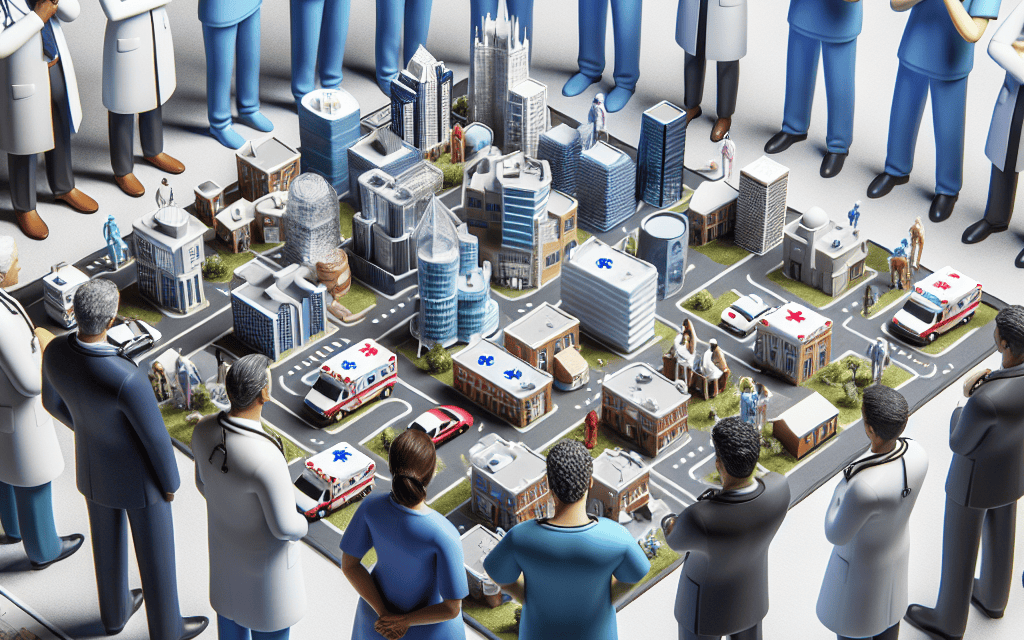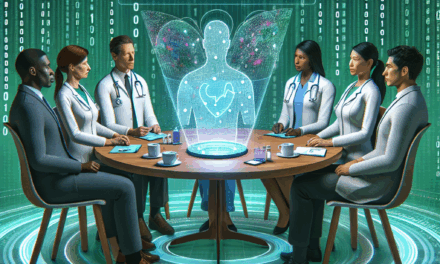Optimizing Healthcare: A Strategic Approach

In the rapidly evolving landscape of healthcare, optimization is not just a goal but a necessity. With increasing demands, limited resources, and the need for improved patient outcomes, healthcare systems worldwide are seeking strategic approaches to enhance efficiency, effectiveness, and equity. This article delves into the multifaceted strategies for optimizing healthcare, exploring key areas such as technology integration, patient-centered care, workforce management, policy reform, and financial sustainability.
1. Integrating Technology in Healthcare
Technology has become a cornerstone of modern healthcare, offering unprecedented opportunities to enhance service delivery, improve patient outcomes, and streamline operations. The integration of technology in healthcare is a strategic imperative that requires careful planning and execution.
1.1 Electronic Health Records (EHRs)
Electronic Health Records (EHRs) have revolutionized the way patient information is stored and accessed. By digitizing patient records, healthcare providers can ensure that critical information is available at the point of care, reducing errors and improving coordination among care teams.
According to a study by the Office of the National Coordinator for Health Information Technology, hospitals that adopted EHRs saw a 3% reduction in adverse drug events. This highlights the potential of EHRs to enhance patient safety and care quality.
- Improved data accessibility and sharing
- Enhanced patient safety through reduced errors
- Streamlined administrative processes
1.2 Telemedicine
Telemedicine has emerged as a vital tool in expanding access to healthcare, particularly in rural and underserved areas. By leveraging telecommunications technology, healthcare providers can offer consultations, diagnostics, and treatment remotely, breaking down geographical barriers.
The COVID-19 pandemic accelerated the adoption of telemedicine, with a 154% increase in telehealth visits in March 2020 compared to the previous year, as reported by the Centers for Disease Control and Prevention (CDC). This shift not only ensured continuity of care but also highlighted the potential for telemedicine to optimize healthcare delivery.
- Increased access to care for remote populations
- Reduced travel time and associated costs for patients
- Enhanced convenience and flexibility for both patients and providers
1.3 Artificial Intelligence (AI) and Machine Learning
Artificial Intelligence (AI) and Machine Learning (ML) are transforming healthcare by enabling predictive analytics, personalized medicine, and automated processes. These technologies can analyze vast amounts of data to identify patterns, predict outcomes, and support clinical decision-making.
For instance, AI algorithms have been developed to predict patient deterioration in intensive care units, allowing for timely interventions. A study published in Nature Medicine demonstrated that an AI model could predict acute kidney injury 48 hours before it occurred, with an accuracy of 90%.
- Enhanced diagnostic accuracy and speed
- Personalized treatment plans based on patient data
- Automated administrative tasks, freeing up clinician time
1.4 Internet of Medical Things (IoMT)
The Internet of Medical Things (IoMT) refers to the interconnected network of medical devices and applications that collect and exchange health data. IoMT has the potential to improve patient monitoring, enhance chronic disease management, and facilitate real-time data collection.
Wearable devices, such as smartwatches and fitness trackers, are examples of IoMT that provide continuous health monitoring. These devices can track vital signs, physical activity, and sleep patterns, offering valuable insights into a patient’s health status.
- Continuous monitoring of patient health metrics
- Early detection of health issues through real-time data
- Improved chronic disease management
1.5 Blockchain in Healthcare
Blockchain technology offers a secure and transparent way to manage healthcare data, ensuring data integrity and privacy. By creating a decentralized ledger, blockchain can enhance data security, streamline processes, and improve patient trust.
One notable application of blockchain in healthcare is in the management of patient consent. By using smart contracts, patients can have greater control over who accesses their data and for what purpose, enhancing privacy and compliance with regulations such as the General Data Protection Regulation (GDPR).
- Enhanced data security and privacy
- Improved patient consent management
- Streamlined administrative processes through smart contracts
2. Patient-Centered Care
Patient-centered care is a fundamental principle of healthcare optimization, focusing on delivering care that is respectful of, and responsive to, individual patient preferences, needs, and values. This approach ensures that patient values guide all clinical decisions.
2.1 Shared Decision-Making
Shared decision-making is a collaborative process that involves patients and healthcare providers working together to make informed decisions about treatment options. This approach empowers patients to take an active role in their care, leading to improved satisfaction and outcomes.
A study published in the Journal of the American Medical Association found that patients who engaged in shared decision-making were more likely to adhere to treatment plans and experienced better health outcomes. This highlights the importance of involving patients in their care decisions.
- Empowered patients through active involvement in care decisions
- Improved adherence to treatment plans
- Enhanced patient satisfaction and outcomes
2.2 Personalized Medicine
Personalized medicine tailors medical treatment to the individual characteristics of each patient, considering factors such as genetics, lifestyle, and environment. This approach allows for more precise and effective interventions, reducing the risk of adverse effects.
The use of genetic testing to guide treatment decisions is a prime example of personalized medicine. For instance, pharmacogenomics involves using genetic information to predict how a patient will respond to specific medications, optimizing drug efficacy and safety.
- Tailored treatment plans based on individual patient characteristics
- Reduced risk of adverse drug reactions
- Improved treatment efficacy and safety
2.3 Continuity of Care
Continuity of care refers to the consistent and seamless provision of healthcare services over time, ensuring that patients receive coordinated and comprehensive care. This approach is particularly important for patients with chronic conditions who require ongoing management.
A study published in the Annals of Family Medicine found that patients who experienced high continuity of care had lower hospitalization rates and healthcare costs. This underscores the value of maintaining strong patient-provider relationships and effective care coordination.
- Consistent and coordinated care over time
- Reduced hospitalization rates and





